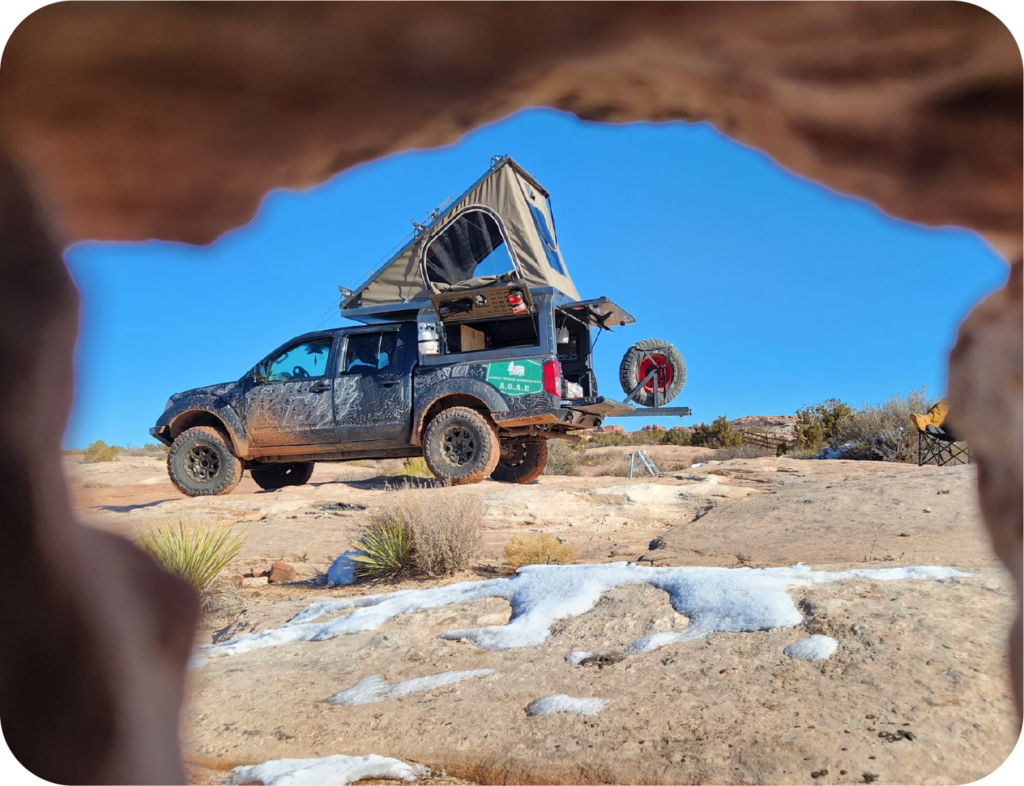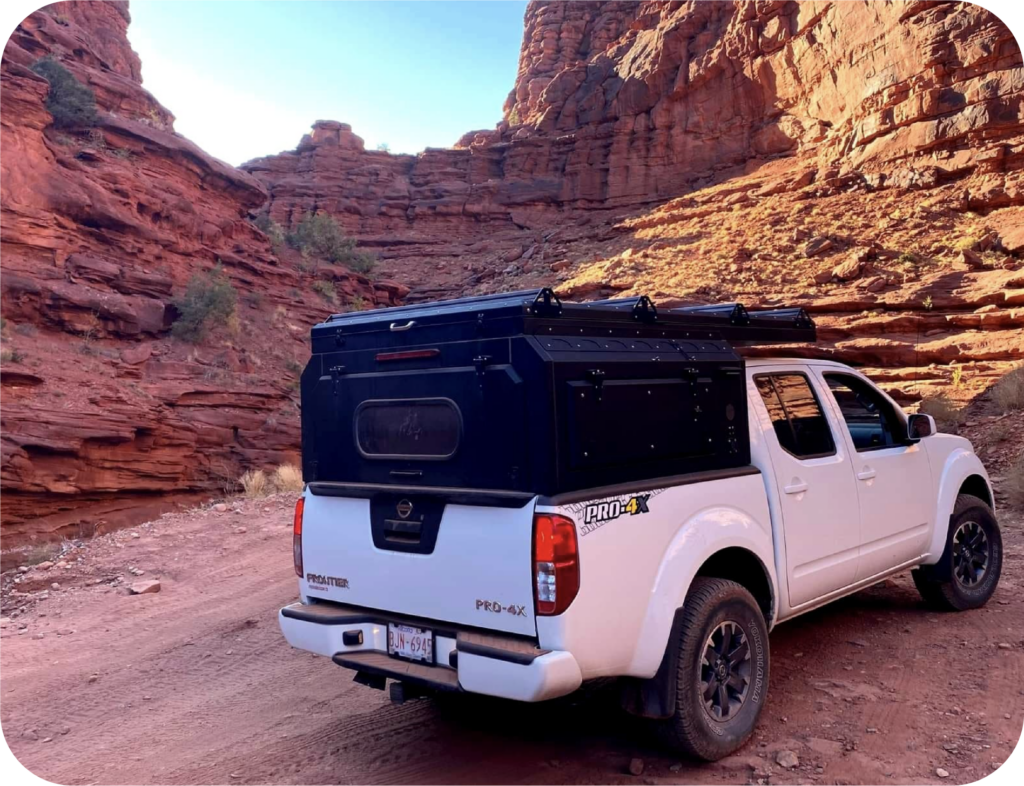Bear Safety:

Learn about the local bear species and their behaviour. Carry bear spray, during peak activity seasons, a registered firearm, learn how to use it, and keep it readily accessible. Make noise while hiking to alert bears to your presence, and store your food correctly to avoid attracting them to your campsite. Bells and Speakers make great additions; remember, it’s your responsibility to let wildlife know you’re there before you spook them.
Wildlife Observation:
Enjoy observing wildlife from a safe distance. Never approach or feed wild animals, as this can be dangerous for you and the animals. Use binoculars or a telephoto lens for close-up views.
Pets:
While it is always better when have your furry friend with you, there are some things to keep in mind. While many choose to leash their pets even while dispersed camping for fear of dogs leading bears to camp this is an extremely unlikely scenario. You should practice your best judgment when camping with pets, you alone know what is best for your pet based on its behaviour and instincts. If you choose not to leash your pet you should have a keen sense that your pet will not run off or take chase on wildlife without your direction.
Conclusion
Camping solo in the Canadian mountains can be a rewarding and transformative experience, but it requires careful preparation and knowledge of food safety, communication, and wildlife encounter basics. By following these guidelines and respecting the environment, you can embark on a safe and unforgettable adventure in the stunning wilderness of the Great White North. Remember, the key to a successful solo camping trip is knowledge, preparedness, and a deep respect for the natural world.





